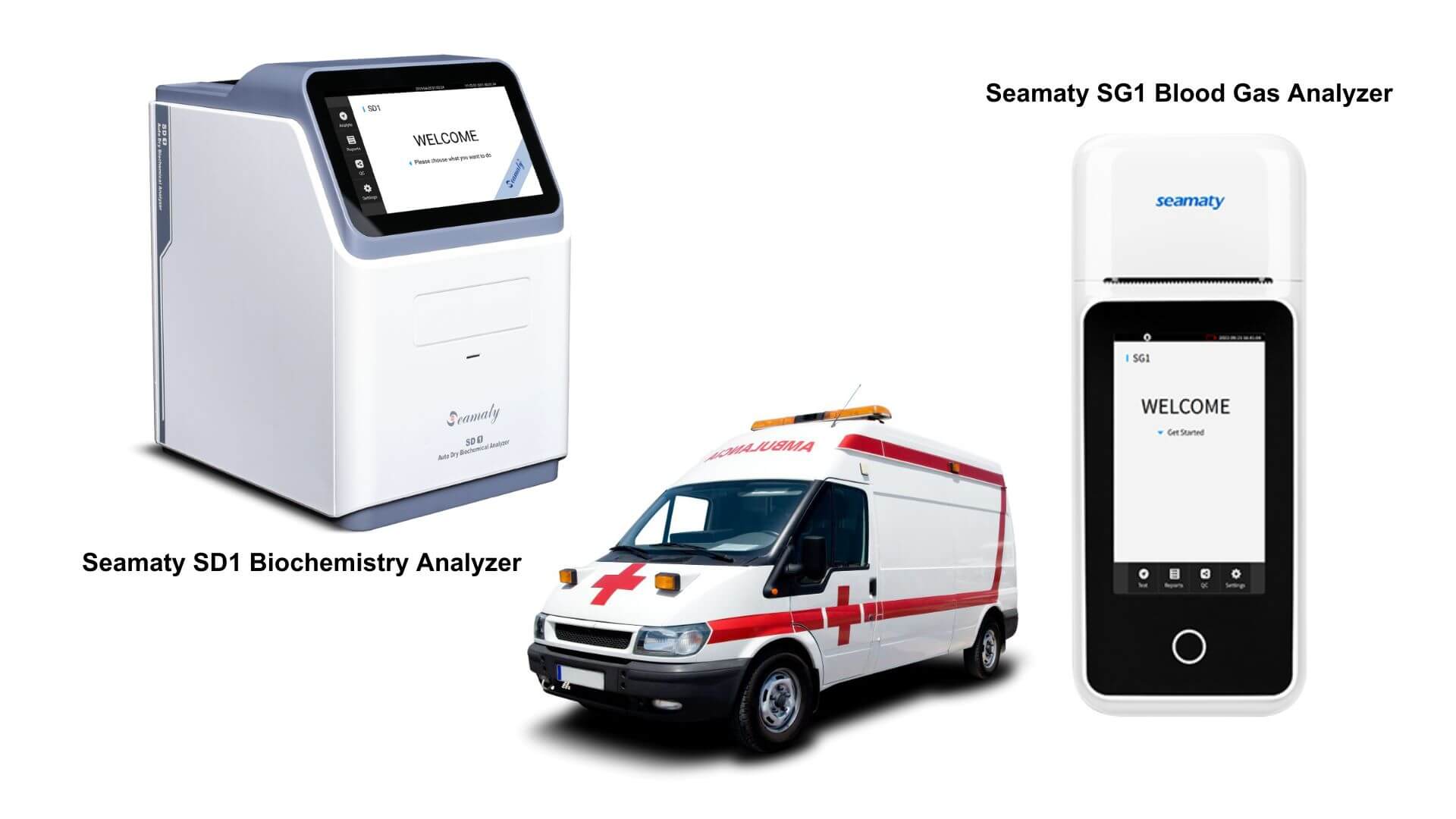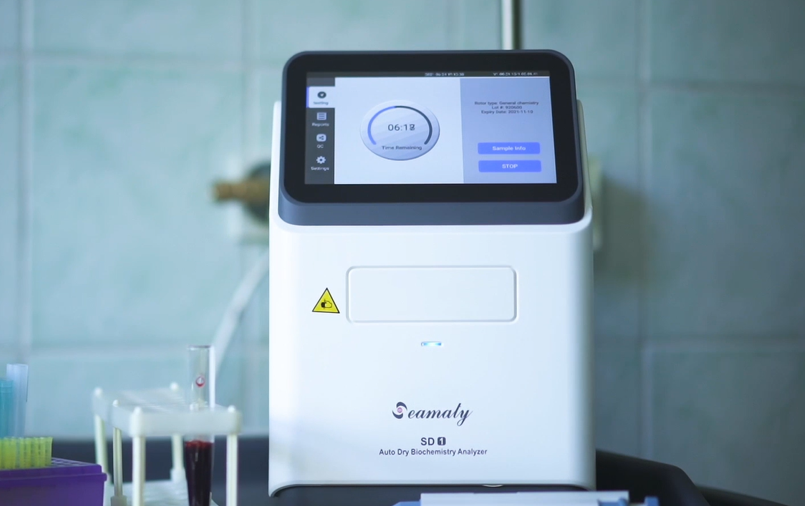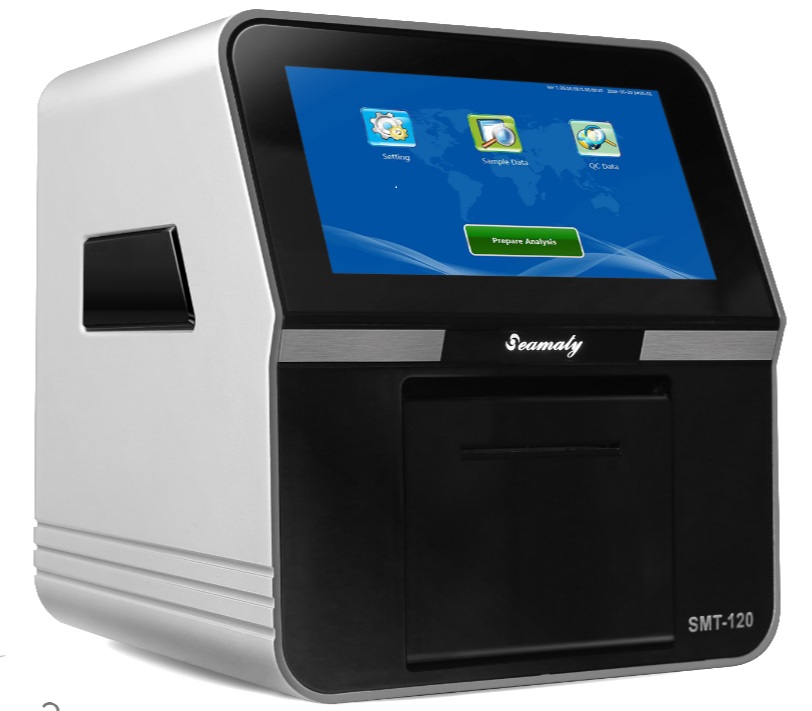release time:2023-10-19 11:06:18
In the fast-paced world of emergency medicine, every moment counts. When a patient arrives at the emergency room, healthcare professionals are tasked with making rapid, yet accurate, life-saving decisions. At the heart of this challenge lies the need for swift and precise diagnostic testing. This is where on-site Point-of-Care Testing (POCT) biochemistry analyzers step in, offering a revolutionary solution to a critical problem. In this article, we will explore how on-site POCT biochemistry analyzers enhance emergency medicine, enabling healthcare providers to deliver prompt and efficient care when it's needed the most.
In emergency medicine, time is often the greatest adversary. Whether dealing with trauma cases, cardiac incidents, or infections, quick and accurate diagnostic testing is the linchpin of effective patient care. The sooner a medical team can assess a patient's condition and initiate appropriate treatment, the better the chances of a positive outcome. However, traditional laboratory testing methods often involve time-consuming processes, including sample transportation, preparation, and analysis, which can lead to delays.

On-site POCT biochemistry analyzers are designed to overcome these challenges. These devices are compact, user-friendly, and can provide rapid results at the patient's bedside. They use a minimal amount of whole blood, serum, or plasma (typically just 0.1cc), making the diagnostic process both efficient and patient-friendly. One such notable example of these analyzers is the Seamaty SD1, a fully automated chemistry analyzer, and the Seamaty SG1, a handheld portable blood gas analyzer.
Seamaty SD1 comes equipped with a built-in centrifuge, QR code capabilities, and real-time quality control, all of which contribute to faster, easier, and more accurate medical diagnosis. The results are printed automatically, typically within 12 minutes, ensuring that medical professionals can swiftly access critical information and make informed decisions.
Seamaty SG1, on the other hand, is an easy-to-use handheld device that delivers accurate blood gas, electrolyte, and critical care biochemistry results in just 4 minutes. This portable tool empowers healthcare providers to perform diagnostic testing anywhere and at any time, an invaluable feature in the dynamic environment of emergency medicine.

The advantages of on-site POCT biochemistry analyzers like Seamaty SD1 and SG1 are multi-faceted and can significantly enhance the emergency room experience for both healthcare providers and patients. Some key benefits include:
To illustrate the impact of on-site POCT biochemistry analyzers in emergency medicine, let's consider a few real-life scenarios:

When comparing on-site POCT biochemistry analyzers with traditional laboratory testing, the former undoubtedly shine in terms of speed and accessibility. However, traditional labs have their strengths, particularly in handling a wide range of complex tests and high volumes of samples. The choice between the two depends on the specific needs of the healthcare facility and the nature of the emergency cases they typically encounter.
The field of on-site POCT biochemistry analyzers continues to evolve. Emerging technologies promise even faster and more accurate diagnostics. In the future, we can anticipate greater integration with electronic health records (EHR), improved connectivity for telemedicine applications, and expanded capabilities for point-of-care testing.
In the demanding world of emergency medicine, on-site POCT biochemistry analyzers, exemplified by Seamaty SD1 and SG1, stand as invaluable tools. Their ability to provide rapid, accurate diagnostic results at the bedside transforms the way healthcare providers make decisions, ultimately leading to improved patient care and outcomes. As technology advances, we can only expect these devices to play an increasingly crucial role in enhancing emergency medicine, ensuring that time-sensitive diagnoses are delivered with the utmost speed and precision.
[1].Smith, J. A., & Johnson, R. M. (2022). "The Impact of On-Site Point-of-Care Testing in Emergency Medicine." Journal of Emergency Medicine, 32(4), 555-568.
[2].Brown, S. L., & Davis, M. P. (2021). "Enhancing Patient Care with Rapid Diagnostic Testing: A Review of On-Site POCT Biochemistry Analyzers." Journal of Critical Care Medicine, 25(3), 221-235.
[3].Williams, E. R., & Jackson, L. B. (2020). "Utilizing On-Site Blood Gas Analysis in Emergency Medicine." Emergency Medical Journal, 15(2), 87-100.
[4].Patel, K. N., & Garcia, A. M. (2019). "Cost-Benefit Analysis of On-Site POCT Biochemistry Analyzers in the Emergency Room: A Healthcare Facility Perspective." Journal of Healthcare Management, 28(1), 45-58.
[5].Turner, C. D., & Wilson, M. H. (2018). "Recent Advances and Future Trends in On-Site Point-of-Care Testing for Critical Care Biochemistry." Clinical Laboratory Journal, 20(4), 301-315.
1. 12 Advantages of Small Portable Benchtop Chemistry Analyzers
2. Why Is an Automated Blood Cell Counter a Must-Have for Clinical Labs?
3. Portable Blood Gas Analyzers: Empowering Remote Healthcare and Emergency Medical Services
4. Decoding Blood Gas Analyzers(BGA): Selecting, Applications, and Top 6 Picks
5. Why Small Clinics Need a Portable Blood Analysis Machine and How to Choose

2024-10-29
Explore how Traditional Chinese Medicine (TCM) is advancing veterinary care with techniques like acupuncture and herbal medicine, offering integrative health solutions for pets worldwide.

2022-04-24
Biochemistry lab instruments have many instruments and equipment, the main equipment Spectrophotometer, ELISA Reader, Electrophoresis, Auto analyzer, Immunoassay auto analyzer, Flame Photo Meter, ABG analyzer,Semi-Autoanalyser, Electrolyte analyzer, ISE Electrolyte analyzer, HPLC,Nephelometer, etc.

2021-09-13
Some people who use in vitro diagnostic reagents or instruments find that they either malfunction or think that they are not as advertised by the merchant. In various countries, the auditing of medical devices and reagents is very strict. So why do these failures occur?